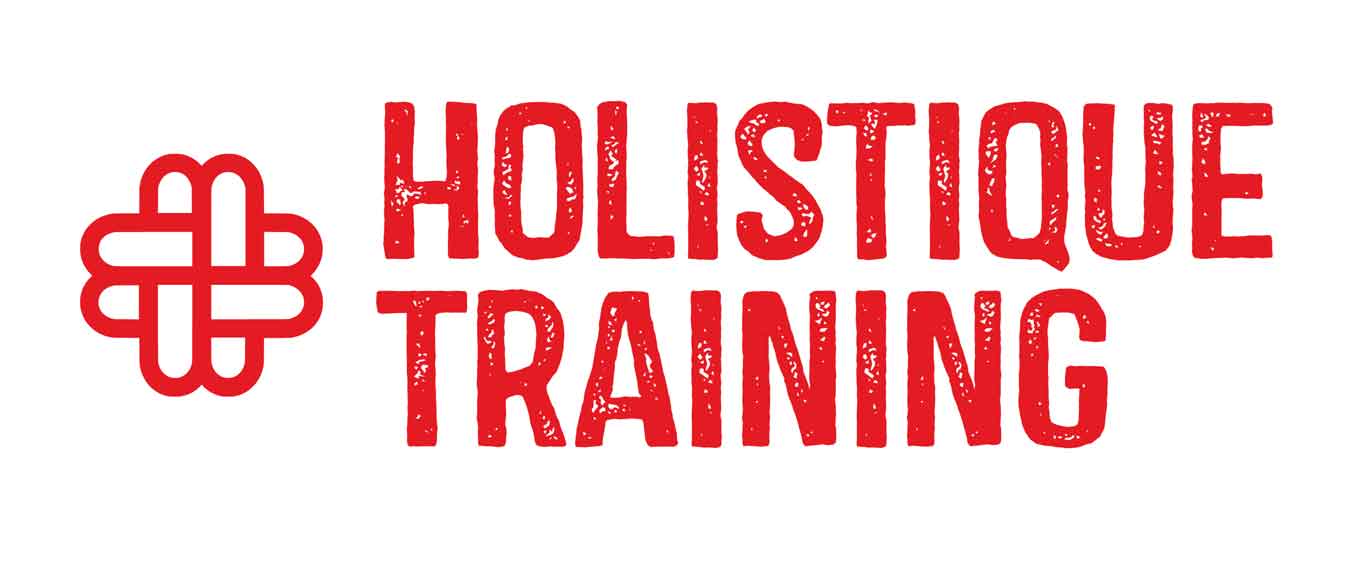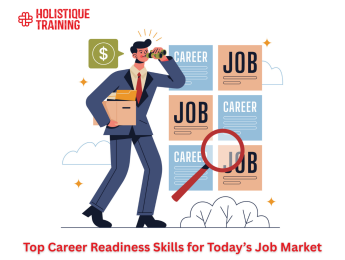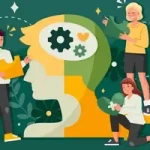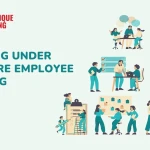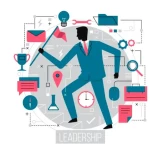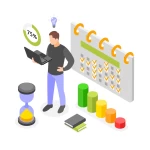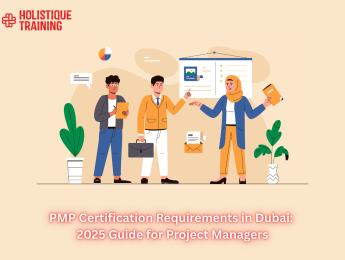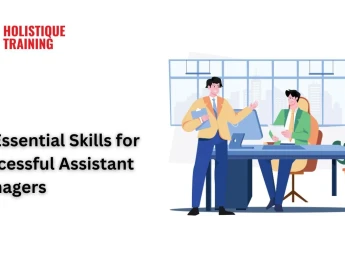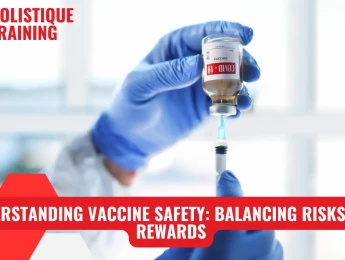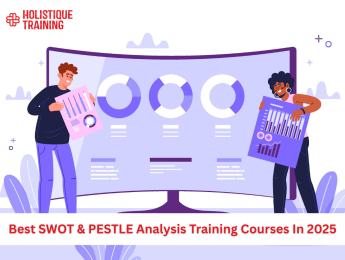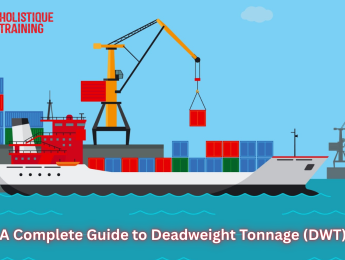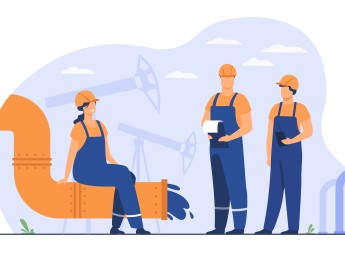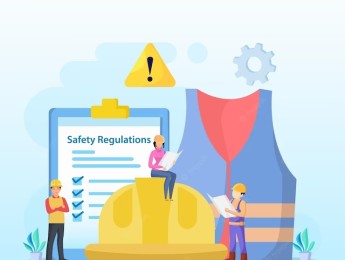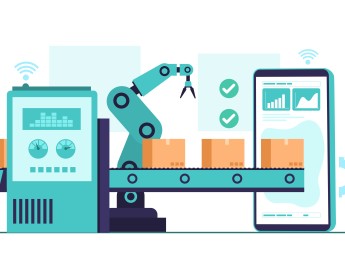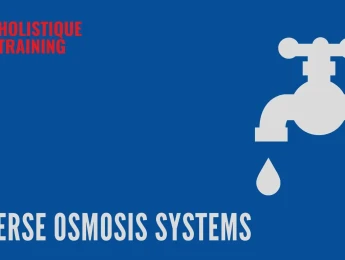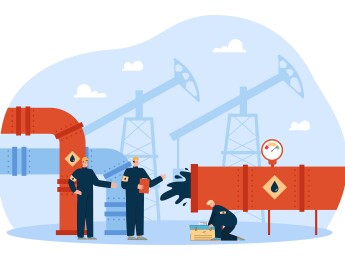- Table of Contents
- Introduction
- What is Career Readiness?
- Competencies of Career Readiness
- 1. Communication
- 2. Critical Thinking
- 3. Emotional Intelligence
- 4. Financial Literacy
- 5. Time Management
- 6. Stress Management
- 7. Equity and Inclusion
- 8. Leadership
- 9. Professionalism
- 10. Teamwork
- 11. Technology
- Current Career Readiness Standards
- Benefits of Career Readiness
- 1. Addressing the Skills Gap
- 2. Enhancing Employability
- 3. Fostering Career Growth
- 4. Improving Workplace Productivity
- 5. Promoting Personal Fulfillment
- 6. Strengthening the Economy
- 7. Reducing Workforce Turnover
- How Do You Build Career Readiness?
- 1. Engage in Self-Assessment
- 2. Seek Experiential Learning Opportunities
- 3. Pursue Continuing Education
- 4. Cultivate a Growth Mindset
- 5. Develop a Professional Network
- 6. Practice Soft Skills
- 7. Leverage Technology
- 8. Embrace Diversity and Inclusion
- 9. Set Clear Goals
- 10. Seek Feedback and Reflect
- Conclusion
Introduction
Success in the professional world is not just about landing a job; it’s about thriving in a role, adapting to changes, and continuously growing. The concept of career readiness has grown in importance as the modern workforce evolves, demanding a wide range of skills and competencies that go beyond technical expertise. This blog post delves into the essence of career readiness, exploring its meaning, core competencies, current standards, benefits, and actionable steps to build it effectively. Whether you’re a student, a professional, or someone guiding others in their career journey, understanding career readiness is key to long-term success and fulfillment.
What is Career Readiness?
Career readiness refers to the preparation and development of skills, knowledge, and behaviors that enable individuals to succeed in their chosen careers. It is not merely about acquiring technical skills or academic qualifications; it’s about cultivating a holistic set of competencies that allow individuals to navigate the complexities of the workplace, collaborate effectively, and contribute meaningfully to their organizations.
At its core, career readiness bridges the gap between education and employment. It ensures that individuals are equipped to meet the expectations of employers, adapt to changing industry demands, and pursue opportunities for growth. In essence, career readiness is the foundation for building a fulfilling and sustainable career.
Competencies of Career Readiness
Career readiness is built on a framework of essential competencies that empower individuals to excel in their professional lives. These competencies go beyond technical know-how, focusing on transferable skills that are valuable across industries. Let’s explore these critical areas:
1. Communication
Communication is the foundation of all professional interactions. It involves the ability to express ideas clearly, listen actively, and adapt communication styles to different audiences. Strong communication skills are essential for conveying information, resolving conflicts, and building relationships. Whether it’s writing a compelling email, delivering a persuasive presentation, or participating in a team discussion, effective communication ensures that ideas are understood and valued.
For example, a marketing professional must communicate effectively with clients to understand their needs while also collaborating with team members to develop campaigns. Similarly, a healthcare provider relies on clear communication to explain medical procedures to patients and coordinate care with colleagues. In every industry, the ability to communicate effectively is a key driver of success.
2. Critical Thinking
Critical thinking is the ability to analyze information, evaluate evidence, and make informed decisions. In today’s fast-paced and complex work environments, professionals are often faced with ambiguous situations and competing priorities. Critical thinking enables them to approach these challenges methodically, identify potential solutions, and anticipate outcomes.
For instance, a project manager faced with a tight deadline and limited resources must assess the situation, prioritize tasks, and allocate resources efficiently. By thinking critically, they can navigate challenges and deliver results without compromising quality. This competency is particularly valuable in roles that require problem-solving, innovation, and strategic planning.
3. Emotional Intelligence
Emotional intelligence (EI) is the ability to recognize, understand, and manage one’s emotions while empathizing with others. High EI fosters better interpersonal relationships, enhances teamwork, and creates a positive work environment. It involves self-awareness, self-regulation, social awareness, and relationship management.
For example, a leader with high emotional intelligence can navigate conflicts within their team by understanding the underlying emotions driving the disagreement. They can mediate effectively, ensuring that all parties feel heard and valued. Emotional intelligence is especially important in roles that require collaboration, leadership, and customer interaction.
4. Financial Literacy
Financial literacy is an often-overlooked aspect of career readiness, but it is essential for both personal and professional success. It involves understanding financial concepts such as budgeting, saving, investing, and managing debt. In the workplace, financial literacy can also include the ability to interpret financial reports, manage project budgets, and make cost-effective decisions.
For example, a small business owner must balance revenue and expenses to ensure profitability, while an employee who understands personal finance can make informed decisions about salary negotiations, benefits, and retirement planning. Financial literacy not only reduces stress but also empowers individuals to make decisions that support their long-term goals.
5. Time Management
Time management is the ability to prioritize tasks, allocate time effectively, and meet deadlines. In a world where professionals are often juggling multiple responsibilities, strong time management skills ensure that work is completed efficiently without sacrificing quality.
For instance, a software developer working on multiple projects must allocate time to coding, testing, and debugging while also attending meetings and providing updates to stakeholders. By managing their time effectively, they can meet deadlines and maintain a healthy work-life balance. Time management is a critical skill for achieving productivity and avoiding burnout.
6. Stress Management
Workplace stress is inevitable, but the ability to manage it effectively is a critical competency. Stress management involves recognizing stressors, developing coping strategies, and maintaining emotional well-being. Professionals who can manage stress are more resilient, adaptable, and productive.
For example, a teacher facing the demands of lesson planning, grading, and classroom management can benefit from stress management techniques such as mindfulness, exercise, and time off to recharge. By managing stress, they can maintain their energy and focus, ensuring a positive learning environment for their students.
7. Equity and Inclusion
Equity and inclusion are essential for fostering a diverse and collaborative workplace. This competency involves understanding and respecting differences in race, gender, age, culture, and abilities, as well as actively promoting fairness and inclusion.
For instance, a human resources professional who prioritizes equity and inclusion can create policies that ensure equal opportunities for all employees. They can also lead initiatives to address unconscious bias and promote diversity in hiring practices. Embracing equity and inclusion not only enhances workplace culture but also drives innovation by leveraging diverse perspectives.
8. Leadership
Leadership is the ability to inspire, motivate, and guide others toward achieving common goals. It is not limited to managerial roles; anyone can demonstrate leadership by taking initiative, influencing others positively, and driving change.
For example, a junior employee who identifies a process inefficiency and proposes a solution is demonstrating leadership. Similarly, a team member who fosters collaboration and resolves conflicts is contributing to the team’s success. Leadership is a valuable competency at every level of an organization, as it empowers individuals to make a meaningful impact.
9. Professionalism
Professionalism encompasses reliability, accountability, and ethical behavior. It reflects an individual’s commitment to their role and their ability to represent their organization positively. Professionalism also includes qualities such as punctuality, respect, and attention to detail.
For example, a customer service representative who consistently delivers high-quality support and maintains a positive attitude, even in challenging situations, demonstrates professionalism. This competency builds trust and credibility, both within the organization and with external stakeholders.
10. Teamwork
Teamwork is the ability to collaborate effectively with others to achieve shared goals. It involves communication, conflict resolution, and leveraging diverse skills and perspectives. In today’s interconnected work environments, teamwork is essential for driving innovation and achieving success.
For instance, a product development team must work together to design, test, and launch a new product. Each team member brings unique skills and expertise, and their ability to collaborate determines the project’s success. Teamwork fosters a sense of belonging and ensures that everyone’s contributions are valued.
11. Technology
In an increasingly digital world, technological proficiency is non-negotiable. This competency includes familiarity with industry-specific tools, adaptability to new technologies, and understanding the impact of technology on workflows. It also involves staying updated on trends such as artificial intelligence,data analytics, andcybersecurity.
For example, a marketing professional who is proficient in digital advertising platforms can create targeted campaigns that drive results. Similarly, an engineer who stays updated on advancements in automation can identify opportunities to improve efficiency. Technological proficiency not only enhances productivity but also positions professionals as valuable assets in their organizations.
These competencies are interconnected and mutually reinforcing. For instance, strong communication skills enhance teamwork, while emotional intelligence supports leadership. By developing these competencies, individuals can navigate the complexities of the workplace, adapt to changing demands, and build successful careers. Career readiness is not about mastering one skill in isolation; it’s about cultivating a balanced and adaptable skill set that prepares individuals for long-term success.
Current Career Readiness Standards
Career readiness standards serve as benchmarks to ensure individuals are equipped with the skills and competencies necessary to succeed in the workforce. These standards are developed by educational institutions, industry leaders, and organizations to bridge the gap between academic preparation and professional expectations. While specific standards may vary depending on the region or industry, they share a common goal: to align education and training with the demands of the modern workplace.
In the United States, one of the most widely recognized frameworks is provided by the National Association of Colleges and Employers (NACE).NACE identifies eight core competencies that define career readiness, including critical thinking, communication, teamwork, leadership, professionalism, and technology. These competencies serve as a guide for colleges, universities, and employers to prepare students and job seekers for professional success. NACE’s framework emphasizes the importance of both technical skills and soft skills, underscoring the need for a balanced approach to career preparation.
Similarly, many industries have their own career readiness standards tailored to their specific needs. For example, the technology sector may prioritize competencies such as coding, data analysis, and cybersecurity, while the healthcare industry emphasizes patient care, empathy, and regulatory compliance. These industry-specific standards ensure that individuals entering the workforce are prepared to meet the unique challenges of their chosen fields.
Educational institutions also play a key role in promoting career readiness standards. Many schools and universities integrate career readiness into their curricula by offering courses, workshops, and experiential learning opportunities that align with employer expectations. For instance, internships, cooperative education programs, and career counseling services are designed to help students develop the skills and knowledge required to transition seamlessly into the workforce.
In addition to formal education, professional development programs and certifications contribute to upholding career readiness standards. Organizations like LinkedIn Learning,Holistique Training, and industry-specific training providers offer courses and credentials that enhance individuals' employability and ensure they remain competitive in their fields.
Ultimately, current career readiness standards reflect the evolving needs of the workforce, emphasizing adaptability, lifelong learning, and a balance of technical and interpersonal competencies. By adhering to these standards, individuals can better navigate their career paths and meet the expectations of today’s employers.
Benefits of Career Readiness
Investing in career readiness yields significant benefits for individuals, organizations, and society as a whole. Let’s explore how career readiness addresses key challenges and creates opportunities:
1. Addressing the Skills Gap
One of the most significant benefits of career readiness is its ability to bridge the skills gap. Many employers report difficulties finding candidates with the right mix of technical and soft skills. Career readiness ensures that individuals are equipped with the competencies employers value most, such as critical thinking, communication, and technological proficiency. By aligning education and training with industry needs, career readiness helps reduce this disconnect, creating a more prepared and capable workforce.
For example, industries like technology and healthcare often face shortages of skilled professionals. Career readiness programs that focus on these fields can help fill these gaps, ensuring that employers have access to talent and that job seekers are well-positioned for high-demand roles.
2. Enhancing Employability
Career-ready individuals are more attractive to employers because they demonstrate the ability to contribute effectively from day one. Possessing a well-rounded skill set—ranging from teamwork and leadership to professionalism and adaptability—makes candidates stand out in a competitive job market. Employers are more likely to hire individuals who show they can navigate workplace challenges, communicate effectively, and adapt to changing demands.
This enhanced employability benefits job seekers by increasing their chances of securing meaningful employment. It also benefits employers, who can reduce hiring risks and the need for extensive onboarding or training. In fact, nearly 90% of the college Class of 2024 reported that their institution prepared them for the next step in their career, according toNACE’s 2024 Student Survey. This highlights the growing value placed on career readiness by both job seekers and employers alike.
3. Fostering Career Growth
Career readiness is not just about landing a job—it’s about building a sustainable and fulfilling career. The competencies developed through career readiness, such as problem-solving, leadership, and emotional intelligence, are transferable across roles and industries. These skills enable individuals to adapt to new opportunities, take on greater responsibilities, and grow professionally.
For instance, an entry-level employee with strong leadership and critical thinking skills is more likely to be considered for promotions or new roles within their organization. Career readiness provides the foundation for long-term success by equipping individuals with the tools they need to seize opportunities and advance in their careers.
4. Improving Workplace Productivity
Employees with career readiness competencies are more productive and efficient in their roles. They know how to manage their time effectively, collaborate with colleagues, and approach problems with a solution-oriented mindset. This not only enhances individual performance but also contributes to the overall success of the organization.
For example, a team made up of career-ready professionals is more likely to work cohesively, meet deadlines, and deliver high-quality results. This improved productivity benefits employers by increasing efficiency and driving innovation, while also creating a positive and rewarding work environment for employees.
5. Promoting Personal Fulfillment
Career readiness empowers individuals to navigate workplace challenges, achieve their goals, and find meaning in their work. By equipping them with the skills needed to succeed, it builds confidence and a sense of purpose. A career-ready individual is more likely to feel satisfied with their job, as they are better equipped to handle responsibilities, communicate effectively, and contribute meaningfully.
This personal fulfillment extends beyond the workplace, as individuals who feel confident and successful in their careers are more likely to experience overall well-being. They are better able to balance work and personal life, manage stress, and pursue long-term goals.
6. Strengthening the Economy
On a larger scale, career readiness benefits society by contributing to economic growth and stability. A workforce that is skilled, adaptable, and prepared is better equipped to meet the demands of evolving industries. This leads to higher employment rates, increased productivity, and greater innovation.
For example, as industries adopt new technologies, career-ready professionals who are proficient in digital tools and adaptable to change can help organizations remain competitive. This not only drives business success but also supports economic progress by creating jobs and fostering innovation.
7. Reducing Workforce Turnover
Career readiness also benefits organizations by reducing employee turnover. When individuals have the skills and competencies needed to succeed in their roles, they are more likely to feel confident and satisfied, which in turn increases their commitment to their employers. Organizations that invest in career readiness initiatives—such as training programs, mentorship, and professional development—can build a more engaged and loyal workforce.
For instance, an employee who feels supported in their career growth is less likely to leave their organization for another opportunity. This reduces the costs associated with hiring and training new employees while fostering a more stable and experienced workforce.
In summary, career readiness has far-reaching benefits for individuals, organizations, and society as a whole. It addresses critical challenges like the skills gap and workforce turnover while enhancing employability, productivity, and personal fulfillment. By investing in career readiness, we can create a workforce that is not only prepared for today’s challenges but also capable of driving future success.
How Do You Build Career Readiness?
Building career readiness is a lifelong process that requires intentional effort and continuous learning. Here are practical steps to develop and enhance career readiness:
1. Engage in Self-Assessment
The first step in building career readiness is understanding your strengths, weaknesses, and areas for improvement.Self-assessment tools, such as personality tests, skill inventories, and career aptitude assessments, can provide valuable insights into your abilities and interests. Reflect on your personal values, career goals, and the type of work environment where you thrive.
For example, if you excel at problem-solving but struggle with public speaking, you can focus on improving your communication skills while leveraging your analytical abilities in your career. Self-awareness helps you identify the competencies you need to develop and align your efforts with your long-term goals.
2. Seek Experiential Learning Opportunities
Hands-on experience is one of the most effective ways to build career readiness. Internships, cooperative education (co-op) programs, volunteer work, and part-time jobs provide real-world exposure to workplace dynamics and help you apply theoretical knowledge in practical settings. These experiences also allow you to develop critical competencies like teamwork, communication, and time management.
For instance, an internship in marketing not only helps you learn about branding and campaign strategies but also teaches you how to collaborate with a team, meet deadlines, and adapt to client feedback. Experiential learning bridges the gap between academic preparation and professional expectations, making you more confident and capable in the workplace.
Step | Benefits | Actionable Tips |
Engage in Self-Assessment | Identifies strengths and areas for improvement | Use career aptitude tests or reflect on past experiences |
Seek Experiential Learning | Gains hands-on experience and builds practical skills | Apply for internships, volunteer roles, or part-time jobs |
Pursue Continuing Education | Stays updated on industry trends and new skills | Take online courses, certifications, or attend workshops |
Develop a Professional Network | Accesses mentorship and career opportunities | Attend networking events and connect on LinkedIn |
Practice Soft Skills | Enhances communication, teamwork, and leadership | Join clubs, take leadership roles, or practice public speaking |
3. Pursue Continuing Education
Career readiness requires a commitment to lifelong learning. As industries evolve and new technologies emerge, staying updated on trends and acquiring new skills is essential. Enroll in workshops, online courses, certifications, or degree programs that align with your career goals. Platforms like LinkedIn Learning, Coursera, and industry-specific training providers offer flexible options to enhance your knowledge and skills.
For example, a software developer can stay competitive by learning new programming languages or earning certifications in artificial intelligence and machine learning. Continuing education not only keeps you relevant in your field but also demonstrates your dedication to personal and professional growth.
4. Cultivate a Growth Mindset
A growth mindset is the belief that abilities and intelligence can be developed through effort, learning, and persistence. Adopting this mindset helps you view challenges as opportunities to grow and setbacks as valuable learning experiences. It fosters resilience, adaptability, and a willingness to embrace change—qualities that are essential for career readiness.
For example, if you face a difficult project at work, a growth mindset encourages you to seek feedback, learn from mistakes, and improve your approach instead of feeling defeated. Cultivating this mindset enables you to continuously evolve and succeed in an ever-changing professional landscape.
5. Develop a Professional Network
Networking is a powerful tool for building career readiness. Connecting with professionals in your field can provide valuable insights, mentorship, and opportunities for career advancement. Attend industry events, join professional organizations, and leverage platforms like LinkedIn to build relationships with peers, mentors, and potential employers.
For instance, a recent graduate who attends a networking event might meet a recruiter who offers insights into the hiring process or a mentor who provides guidance on career development. A strong professional network not only opens doors to new opportunities but also supports your growth by offering advice and resources.
6. Practice Soft Skills
Soft skills, such as communication, teamwork, and emotional intelligence, are critical components of career readiness. These skills are transferable across roles and industries, making them essential for long-term success. Practice these skills in everyday interactions, both in and outside of work, and seek feedback to refine them.
For example, you can improve your communication skills by participating in public speaking clubs like Toastmasters or by practicing active listening during team meetings. Similarly, volunteering for group projects or leadership roles helps you build teamwork and leadership abilities. Consistent practice ensures that these skills become second nature, enhancing your effectiveness in any professional setting.
7. Leverage Technology
In today’s digital age, technological proficiency is a non-negotiable aspect of career readiness. Familiarize yourself with industry-specific tools, software, and platforms, and stay updated on emerging technologies that impact your field. Being tech-savvy not only enhances your productivity but also positions you as a valuable asset to employers.
For instance, a graphic designer should be proficient in tools like Adobe Creative Suite, while a data analyst should have expertise in data visualization tools like Tableau or Power BI. Additionally, understanding general tools like Microsoft Office, cloud-based collaboration platforms, and project management software is beneficial across industries.
8. Embrace Diversity and Inclusion
Career readiness includes the ability to work effectively in diverse and inclusive environments. Educate yourself on diversity, equity, and inclusion (DEI) principles, and actively seek opportunities to engage with people from different backgrounds. This competency not only enhances your interpersonal skills but also prepares you to contribute positively to an inclusive workplace culture.
For example, participating in cultural competency training or joining employee resource groups can help you understand and appreciate different perspectives. Embracing diversity and inclusion fosters collaboration, innovation, and mutual respect, making you a more effective and empathetic professional.
9. Set Clear Goals
Setting clear, measurable goals provides direction and motivation for your career journey. Break down your long-term objectives into smaller, actionable steps, and track your progress regularly. Goals give you a sense of purpose and help you prioritize your efforts.
For instance, if your goal is to become a project manager, you might start by earning a certification in project management, gaining experience in team leadership, and networking with professionals in the field. Clear goals keep you focused and ensure that your actions align with your aspirations.
10. Seek Feedback and Reflect
Feedback is a valuable tool for growth and self-improvement. Actively seek feedback from peers, mentors, supervisors, and colleagues to identify areas where you can improve. Reflect on your experiences, celebrate your successes, and learn from your mistakes.
For example, after completing a project, ask your team for feedback on your performance. Use their input to identify strengths and areas for improvement, and create a plan to address any gaps. Regular reflection and feedback help you stay on track and continuously refine your skills.
Table: Metrics to measure the effectiveness of building career readiness
Metric | How It Reflects Career Readiness |
Job Placement Rate | Indicates how effectively skills translate into employment opportunities |
Feedback from Supervisors or Mentors | Provides insights into the development of professional competencies like teamwork and communication |
Skill Assessment Scores | Measures improvement in key areas such as technical, soft, or leadership skills |
Networking Growth (Connections Made) | Tracks progress in building a professional network and accessing career opportunities |
Career Progression (Promotions/Advancements) | Reflects the ability to adapt and thrive in professional environments over time |
By taking these steps, you can build a strong foundation of career readiness that prepares you to navigate the complexities of the modern workforce. Whether you’re entering a new field, advancing in your career, or adapting to industry changes, these strategies ensure that you remain confident, capable, and competitive. Career readiness is not a one-time achievement—it’s a lifelong commitment to growth and adaptability.
Conclusion
Career readiness is a dynamic and multifaceted concept that equips individuals to navigate the complexities of the modern workforce. By developing a comprehensive set of competencies—ranging from communication and critical thinking to leadership and technology—individuals can position themselves for success and fulfillment in their careers. These skills not only prepare you to meet current workplace demands but also empower you to adapt, innovate, and lead as industries evolve.
The journey to career readiness is ongoing, requiring self-awareness, continuous learning, and adaptability. Whether you’re just starting your career or looking to advance, investing in career readiness is a commitment to your future. It’s about more than just meeting employer expectations; it’s about unlocking your potential, contributing meaningfully, and building a career that aligns with your values and aspirations. Each step you take toward enhancing your skills and broadening your experiences brings you closer to a fulfilling and impactful professional life.
As the workforce continues to evolve, the importance of career readiness cannot be overstated. By embracing this concept and taking proactive steps to develop your skills, you can thrive in any professional environment and create a lasting impact in your chosen field. However, knowing where to start and how to structure your growth can feel overwhelming.
That’s why we’ve designed the Developing a Personal Action Plan course to help you take charge of your career readiness journey. This course provides you with the tools and strategies to assess your strengths, identify areas for improvement, and create a personalized roadmap to achieve your professional goals. Through practical exercises, expert guidance, and actionable insights, you’ll gain clarity on your career path and the confidence to take meaningful steps forward.
Don’t leave your career readiness to chance—take control of your future today. Enroll in our Developing a Personal Action Plan course and start building the skills, mindset, and strategy you need to thrive in the modern workforce. Your future self will thank you!
